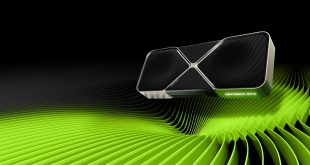MSI have always promoted this range with aircraft imagery. This card is no exception.
The box is a gatefold design. MSI list many of the enhancements across these areas. The R7970 Lightning uses Military Class III components which have passed third party testing to meet MIL-STD-810G standards. MSI are keen to highlight the Unlocked Digital Power architecture. The implementation includes an unlocked BIOS, digital PWM chipset and an improved power supply design which is said to provide double the power of the reference board. The unlocked BIOS removes CCC overclocking limits and the power tune limit is increased by 180%. The OCP limits are also relaxed to help ensure a good overclock.
The MSI bundle is impressive, there is a software disc, a ‘certificate', Crossfire bridge and various video converters for a myriad of panels. MSI also include voltage check point connectors.
The latest Twin Frozr cooler looks fantastic and like the XFX design is constructed from metals. MSI include a yellow ‘racing stripe' along the top of the cooler. MSI use a dual 100mm fan configuration to reduce noise and to maximise air flow. The fans use the ‘Propeller Blade Technology', these fans run in reverse for 30 seconds after booting to remove dust from the heat sinks and to keep the cooling performance at optimum levels. The card measures 305mm x 135.5mm x 40mm with the GPU reactor installed.
The rear of the card features a ‘GPU reactor' power supply module which increases the current volume by 88% while reducing power supply noise by 13%.
The card requires two 8 pin power connectors for stable operation.
This card can power up to 6 screens simultaneously via EyeFinity. There are two DVI ports and four Mini-Displayport connectors.
The card is Crossfire capable in 2, 3 and 4 way configurations.
The ‘GPU Reactor' is removed by pushing in on the sides. Underneath is a little board which controls the improved power delivery.
In operation, this GPU Reactor glows blue, as shown above.
The GPU reactor has to be removed first before disassembling the R7970 for a closer look. The backplate has the power cable adhered on the inside, so be careful when handling.
The MSI R7970 Lightning features dedicated heatsinks on the memory and VRM's to improve the performance. They are using gold coated Solid State Chokes on the PCB to provide higher maximum current output and to protect against power surge. The gold coating is said to offer better heat resistance. We noticed they are also using Dark Solid Capacitors with a special coating to help prevent against rust. These also offer higher levels of efficiency.
The MSI cooler uses five thick heatpipes which run into several racks of aluminum fins on either side of the core. MSI call this ‘SuperPipe' technology. The two large 10cm fans above help push air across the full width of the cooler.
Above, an MSI image showing the various layers of this complex discrete solution, viewed from a side angle.
A GPUz overview of the card, detailing the enhanced clock speeds. The Tahiti core is build around the 28nm manufacturing process. It features 2,048 stream processors, is fully PCI E Gen3 compliant (up to 32 gb/s of data bandwidth) and incorporates new AMD Powertune and ZeroCore power technology. There are dual geometry engines, eight render back ends, 32 color ROPs per clock and 128 Z/stencil ROPs per clock.
 KitGuru KitGuru.net – Tech News | Hardware News | Hardware Reviews | IOS | Mobile | Gaming | Graphics Cards
KitGuru KitGuru.net – Tech News | Hardware News | Hardware Reviews | IOS | Mobile | Gaming | Graphics Cards























Lovely, very nice, and yet again very expensive……… we can only dream!
Wow… so thats £500 for a card with no copper used as a cooling material, and Aluminum used instead,
thats a less ductile material = an inferior cooling solution, using a cheapr material for more money…
MSI really know how to impress – or charge more for using cheaper materials!!!
Good point from muppett, copper might have improved on the results by 1-2 c more.
however, the end result is great as the testing shows.
@muppet:
Actually the Cooler material is copper, but it’s nickel coated, so it doesn’t corrode (very, VERY easy with copper)
Only the fin array is made of Aluminium
I take it 12.3 drivers were used for this test and the other custom 7970’s?